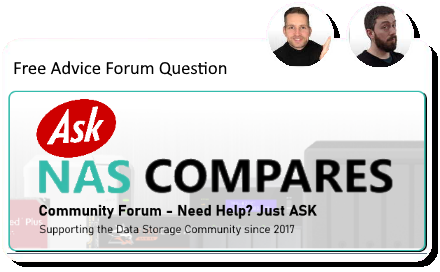09-12-2025, 10:57 AM
Currently running:
Dell Optiplex 7050
Yottamaster DAS connected by USB 3.03 - 5 - 3TB drives
2.5GB network switch
Run Proxmox
ZFS for my NAS pool through Proxmox
Proxmox I run a container for SMB shares
I run Ubuntu as my Plex server and maybe some other Dockers.
Bottle neck is the USB connected DAS. I need to get to SATA ports on the mother board with a case that can support a minimum of 5 drives. I have 5 more 3TB drives I could use.
Use: Store extensive movues/TV shows library, Picture, and maybe offer cloud storage.
Plex is making changes and I wonder if I need to gear up my NAS to do hardware transcoding. Or do I split the two. A low energy NAS along with a Jellyfin/Plex server with a good video card for transcoding.
Other computers I have:
Lenovo IdeasCentre Mini with a i5 13th gen and 32GB of RAM
An older MacBook Air with an M1 chip
I would really appreciate some guidance.
Dell Optiplex 7050
Yottamaster DAS connected by USB 3.03 - 5 - 3TB drives
2.5GB network switch
Run Proxmox
ZFS for my NAS pool through Proxmox
Proxmox I run a container for SMB shares
I run Ubuntu as my Plex server and maybe some other Dockers.
Bottle neck is the USB connected DAS. I need to get to SATA ports on the mother board with a case that can support a minimum of 5 drives. I have 5 more 3TB drives I could use.
Use: Store extensive movues/TV shows library, Picture, and maybe offer cloud storage.
Plex is making changes and I wonder if I need to gear up my NAS to do hardware transcoding. Or do I split the two. A low energy NAS along with a Jellyfin/Plex server with a good video card for transcoding.
Other computers I have:
Lenovo IdeasCentre Mini with a i5 13th gen and 32GB of RAM
An older MacBook Air with an M1 chip
I would really appreciate some guidance.





